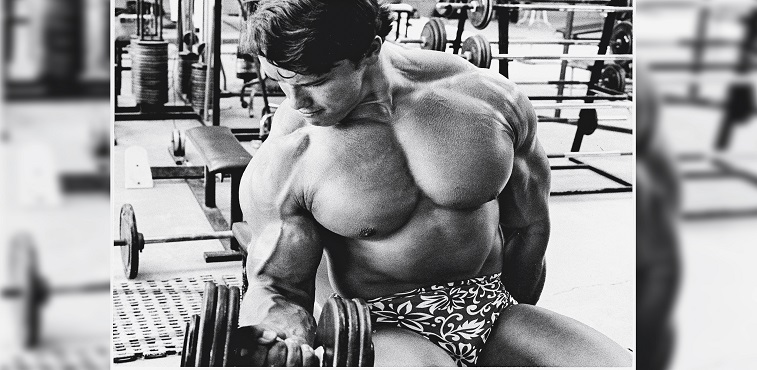Hypertrophy Secrets: Arnold’s antagonist training

For anyone who has ever had contact with the bodybuilding or even fitness world, the name Arnold Schwarzenegger is definitely familiar. He is, without doubt, one of the most famous faces of bodybuilding, not only because he won the Mr. Olympia title 7 times (highest contest rank in bodybuilding), but also because of his career in cinema, having played some iconic roles. Also, because he was governor of the state of California (living the true American dream). So, it’s natural that he left is some gems of his training knowledge!
RELATED: THE OVERTRAINING MYTH
Arnold’s Antagonist Training
One of Arnold’s most common practices in training was to divide the workouts into antagonistic splits, for example, training chest and back on the same day. So, if Arnold did a set of Bench Press, he would superset it with a set of Pull-Ups.
Basically, an antagonistic workout consists in alternating opposing muscular movements (normally in the same plane of movement). This means that most of our muscles are organized in pairs, for example, Biceps/Triceps. When you contract the Bicep, you’re extending the Tricep, and vice-versa.
This way, not only does it allow greater efficiency while training in terms of time, but also provides good results in terms of strength and hypertrophy gains, as many studies indicate. It also promotes greater balance between body parts, since it stimulates both opposites in an equal amount. So, greater symmetry.
How to alternate exercise?
This will be quite an important factor, since the workouts consist in a constant rotation of opposing exercises. Arnold, most of the times, did supersets between pushes and pulls. But, you can apply rest between the opposing movements as well, 2-3 minutes if your goal is to improve strength, or 30-60 seconds for hypertrophy. If you’re brave enough or have a slightly more limited workout window, you can just superset the whole thing (no rest between movements).
An easy way to understand which movements to alternate is to think in terms of planes of movement. You should aim to alternate between movements in the same planes (vertical/horizontal). For example, after doing chest flyes for chest, you can invert your position and do reverse dumbbell flyes for your posterior delts. It isn’t always easy to find an opposing exercise that is perfect, since planes can differ slightly, like incline/decline planes. Stilll, you can use approximations, for example, alternating Incline Bench Presses With Chest Supported Incline Rows.
Here are a few opposing exercises:
- Squats/Deadlifts
- Lunges/Step Ups
- Leg Extension/ Leg Curl
- Chest Presses/ Back Rows
How can I incorporate this method in my training routine?
You can include antagonist training in all of your exercises, even partially if you only wish to train certain portions of the movement.
Week example:
- Monday- Chest/Shoulders/Back – Focus on Horizontal Planes
- Tuesday – Leg Day – Focus on the Anterior Portion
- Wednesday – Arms
- Thursday – Rest
- Friday – Chest/Shoulders/Back – Focus on Vertical Planes
- Saturday – Leg Day –Focus on the Posterior Portion
- Sunday – Rest
RELATED: FÁBIO JARIMBA’S TRANSFORMATION
References:
http://www.ncbi.nlm.nih.gov/pubmed/15705035

